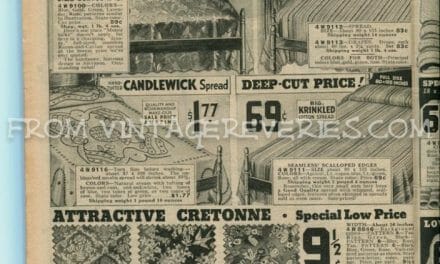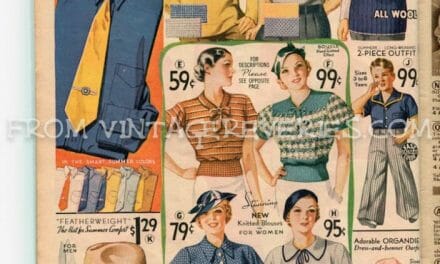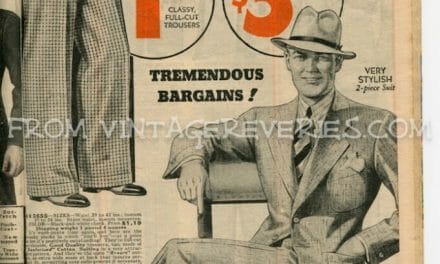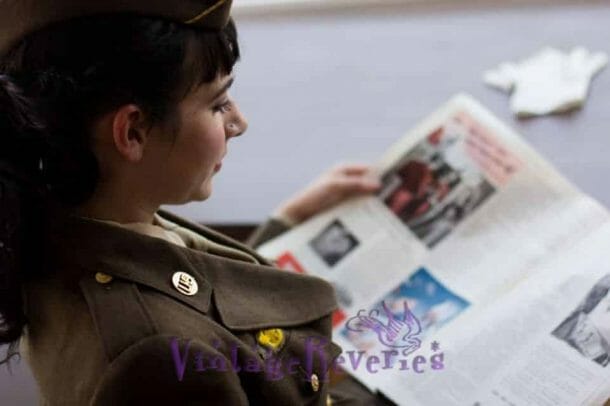
1930s baby clothes

This delightful page of advertisements from the 1935 Chicago Mail Order Company catalog offers a charming glimpse into how babies and young children were dressed during the height of the Great Depression. The section, nestled between lingerie and slips, showcases baby bonnets, little girls’ dresses, rompers, boys’ sunsuits, and sanitary packed hemmed diapers – all staples of infancy and toddlerhood in the 1930s.
Fashion in the 1930s was shaped by a combination of practicality and the enduring desire for beauty, even during difficult economic times. For children, clothing was designed to be affordable, utilitarian, and, in many cases, to grow with the child. Families often reused clothing from one child to the next due to financial constraints, so durability and functionality were key aspects in the designs. Advertisements like these from the Chicago Mail Order catalog provided an affordable, accessible way for families across America to purchase new clothing at a time when many were struggling.
Baby clothing in 1935 often reflected the simplicity of the adult fashions of the time. The emphasis was on soft fabrics, pastel colors, and loose-fitting, easy-to-maintain garments. Baby bonnets, like the ones advertised here, were an essential accessory to protect newborns and toddlers from the sun or chill while also maintaining an adorable aesthetic. Little girls’ dresses featured delicate details such as lace, smocking, and ribbons, often highlighting traditional gendered styles of the period. Boys’ sunsuits were practical yet charming, allowing mobility and comfort for active little ones.
One notable highlight from this catalog is the inclusion of “sanitary packed hemmed diapers.” This reflects a growing awareness during the 1930s of hygiene and advances in childcare practices. Disposable diapers were not yet an option, so families relied heavily on reusable cloth diapers, like those advertised, which were marketed as a step toward easing the challenges of childcare during this era.
The 1930s also saw many families turning to mail-order catalogs as a vital lifeline for acquiring goods that weren’t readily available in rural or remote areas. Companies like the Chicago Mail Order Company and Sears Roebuck enabled families to browse and purchase clothing, household items, and supplies without making a trip to a major city. For as little as a few cents to a couple of dollars, mothers could outfit their children through these catalogs, which epitomized the accessibility of early consumer culture.
These scans from the Chicago Mail Order Company catalog provide a delightful window into what life was like for families in the mid-1930s – a time when people found ways to persevere and maintain small joys despite widespread economic struggle. They remind us how things like baby clothing served not only practical needs but also allowed parents to give their children something charming and new in a difficult world.
If you’re captivated by history and vintage fashion, this is just one example of how the trends of the time extended into every aspect of life, even young children’s wardrobes. It’s wonderful to see how styles and priorities have changed – and how some things, like the charm of a baby in an adorable outfit, remain timeless.

















You must be logged in to post a comment.